Cash
Through a current account
In installments through the PIO fund for pensioners
Electronic card (Visa, Master, Dina, etc.)
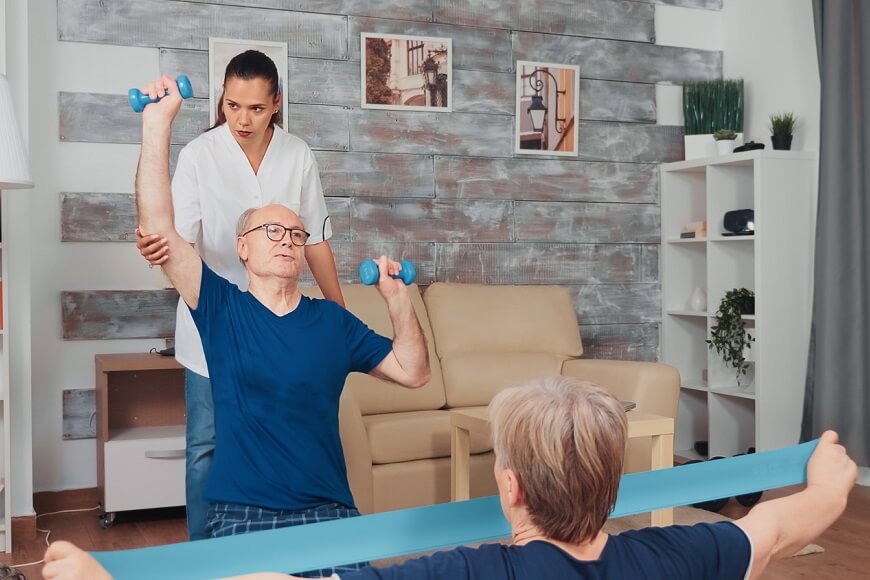
Fokus Fizical 100% guarantees fast and effective healing
Super DISCOUNT! 20% on all therapies in September!
Do not treat yourself over the Internet! Make an appointment via Viber now!
Home physical therapy, also known as outpatient physiotherapy or field physiotherapy, is an increasingly popular approach to providing therapy directly in patients' homes. This service allows patients to receive professional physiotherapy without having to travel to a clinic or clinic. This approach is especially useful for people who have limited mobility or have difficulty coming to therapy.
One of the main benefits of physical therapist home visits is that patients can enjoy the comfort and privacy of their own home during therapy. In addition, the physiotherapist can adapt the therapeutic methods to the specific conditions and needs of the patient, which achieves the optimal effect and improves the quality of life. This personalized approach allows the physiotherapist to focus on the specific challenges and obstacles the patient faces in everyday life, making the therapy more effective and accessible.
Symptoms that may indicate the need for home physical therapy include:
Severe back, neck, or spine pain: These pains can be caused by injuries, prolonged poor posture, or degenerative changes.
A feeling of stiffness or reduced mobility: You may experience stiffness in the joints or muscles, making normal movement difficult.
Leg pain: Pain radiating to the legs may be a result of spine issues or peripheral nerve problems.
Difficulty walking or maintaining balance: Problems with movement or balance may indicate the need for specific exercises and therapies.
Physical therapy at home may be necessary for various causes and conditions that hinder patients' movement or daily activities. Here are some common reasons that may require home physical therapy:
Postoperative rehabilitation
Surgical procedures: Rehabilitation after surgeries such as joint replacement, ligament reconstruction, or spinal surgeries.
Early mobilization: Recovery from surgeries where gradual restoration of functionality and pain reduction is crucial.
Chronic diseases and conditions
Arthritis: Inflammatory joint conditions that make movement and daily activities difficult.
Chronic back pain: Long-term spine pain that requires specific exercises and techniques to improve functionality.
Injuries and trauma
Strains and sprains: Muscle and ligament injuries requiring rehabilitation for functional recovery.
Fractures: Recovery from bone fractures, which may require physical therapy to restore mobility and strength.
Neuromuscular conditions
Stroke: Rehabilitation after a stroke to improve motor functions and speech.
Cerebral palsy: Therapy aimed at enhancing motor skills and functionality for individuals with this condition.
Cardiovascular diseases
Heart attack: Postoperative rehabilitation to improve cardiovascular fitness and functionality.
Chronic obstructive pulmonary disease (COPD): Exercises to improve breathing and overall physical fitness.
Geriatric conditions
Reduced mobility in the elderly: Recovery from falls or improving functionality in cases of declining physical abilities.
Balance and coordination problems
Vertigo: Therapy to improve balance and reduce symptoms of dizziness.
Various diseases and syndromes
How Home Physical Therapy Can Help?
Home physical therapy encompasses a wide range of techniques and methods tailored to the specific needs of the patient. The therapist may use:
Electrical, vacuum, and similar technologies: These methods can help reduce pain and improve circulation.
Muscle-strengthening exercises: These help in restoring strength and stability.
Joint mobilization: To improve mobility and flexibility.
Massage: To relax tense muscles and improve circulation.
Physical therapists who visit patients at home are trained to tailor therapy to the specific needs of the patient and their home environment. They can also provide advice on ergonomics and adjust therapeutic plans according to the patient's condition.
How do I know if I need physical therapy at home?
If you have difficulty moving or going to therapy, as well as severe pain or stiffness that interferes with your daily activities, in-home physical therapy may be a good option.
How often should I have physical therapy at home?
The frequency of visits depends on your condition and the recommendations of the physiotherapist. Usually, meetings are scheduled once or more times a week.
Is in-home physical therapy expensive?
The cost can vary, but many insurance policies cover a portion of the cost. It is recommended that you check with your insurance company.
What information should I provide to the physical therapist before starting therapy?
You should provide information about your medical condition, previous injuries or surgeries, and current symptoms.
Can I continue physiotherapy in the outpatient clinic after I get better?
Yes, after your functionality improves, you can continue with outpatient therapies, if necessary.
Emergency interventions and home visits
+381 64 139 70 28Physical therapy in home conditions
4.500 din
4.500 din
Home specialist examination by a specialist
10.000 din
10.000 din
Home specialist examination with infiltration
14.000 din
14.000 din
Cash
Through a current account
In installments through the PIO fund for pensioners
Electronic card (Visa, Master, Dina, etc.)
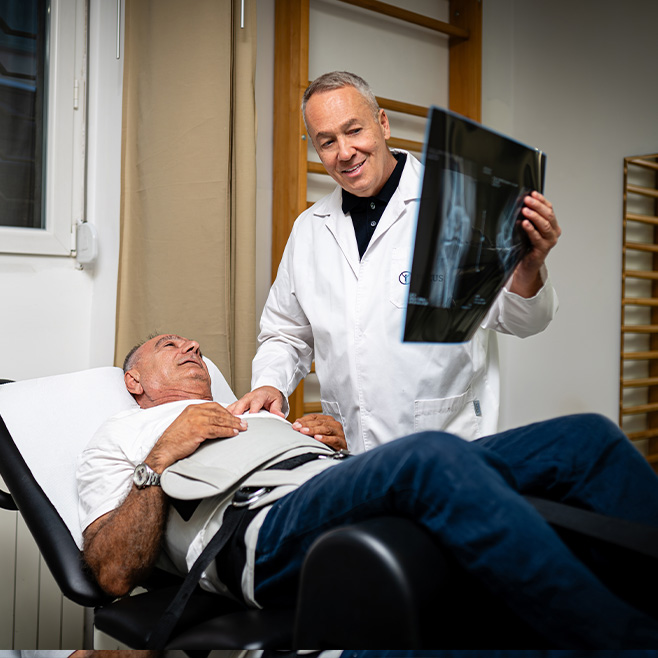
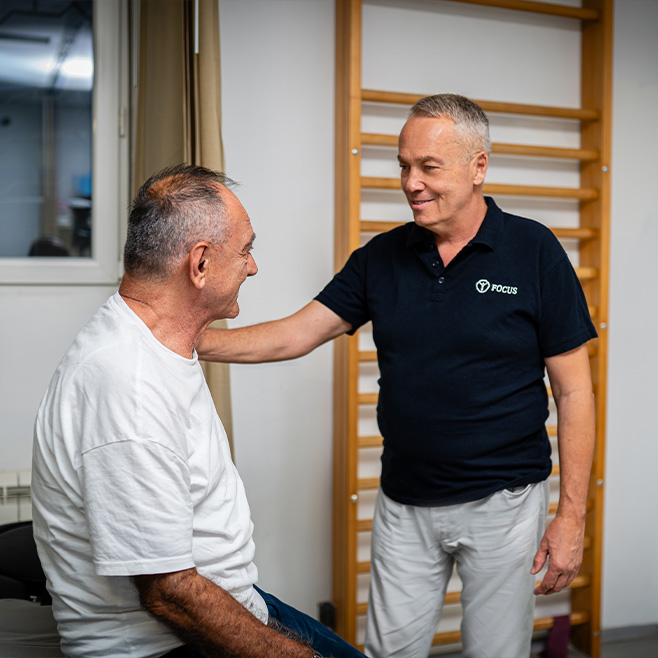
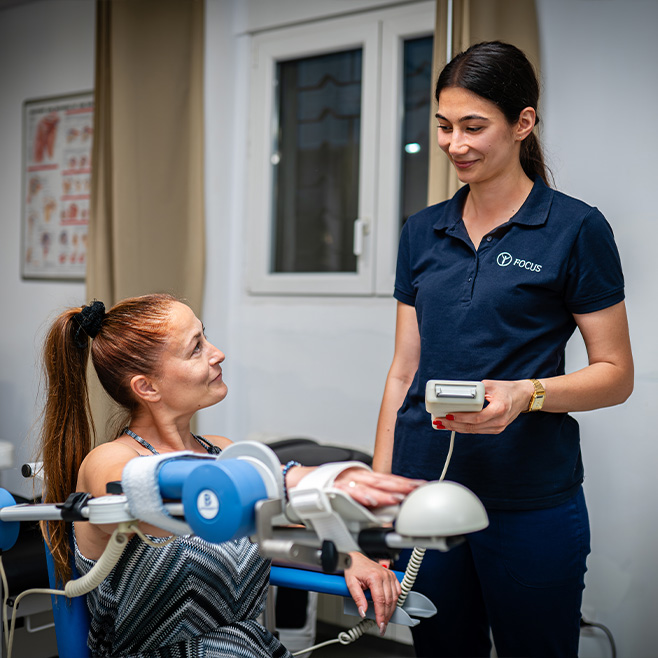
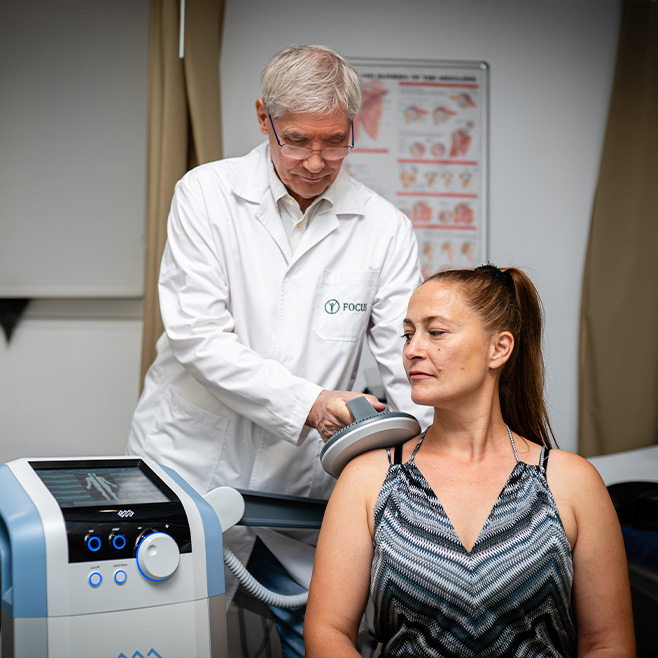
See the experiences of our satisfied patients who successfully recovered with the help of our physical therapy. Get acquainted with the testimonies of patients who faced various joint injuries, sports knee injuries, back injuries and similar problems, which we quickly, efficiently and successfully treated.
Aesthetic surgery
Focus Fizikal is a leading private clinic for physical therapy in Belgrade. For more than 10 years, we have been providing high-quality services that enable quick recovery and healing of our patients.

For all our current and future patients, we have made it possible to schedule an appointment online.